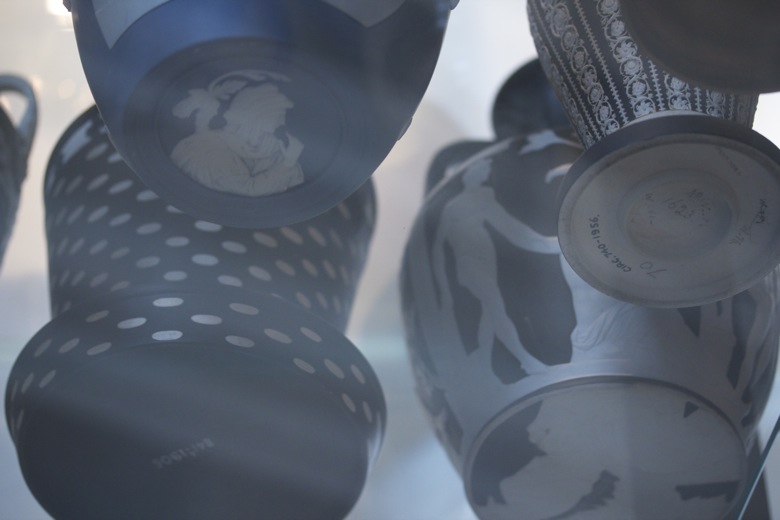The Victoria and Albert Museum claims to be the world's greatest museum of art and design, and I would have to agree. A century and a half of collecting with exceptional taste. I immediately go up to the 6th floor ceramics collection. It is extensive, spanning the entire floor, with skylights above and 10'-12' glass display cases housing the wares. I love the density of the artifacts installed in these cases and that there are multiple examples, rather than just one, demonstrating wares made in a particular style, era, geographical origin and technique. The glass cases allow you to look up through the shelving to see the bottoms of pieces, as well as, the backs. In most museums these views are not often available for observation making this installation particularly remarkable.
Since the collection was acquired in the UK, I am most partial to studying the wares made in Stoke-on-Trent during the late 18th - 19th century. The examples here are much more expansive than anywhere else I've visited, with the exception, of course, being the museums at Stoke-on-Trent which are world class. I have to be ruthless in what I'm going to give my attention to here as there is so much to see. My interests and tastes change as I continue with my ceramic practice and I hope to return to the V&A's collection many times more to investigate wares from other parts of the world and from other time periods.
I'm very fond of the process gallery. It visually illustrates techniques related to ceramic production, articulates the differences between clay bodies, and presents restorative measures to historical wares and artifacts. This gallery also houses a studio for the artist-in-residence where you can watch pieces being fabricated amongst the resource displays. I spend a lot of time in this gallery and frequently reference the collection online for historical forms and decorative techniques. Below is an image of an overglaze colour wheel.
Below is an image of an installation by contemporary artist Edmund De Waal. The V&A produced two videos about this project and his relationship to the museum.




















No comments:
Post a Comment